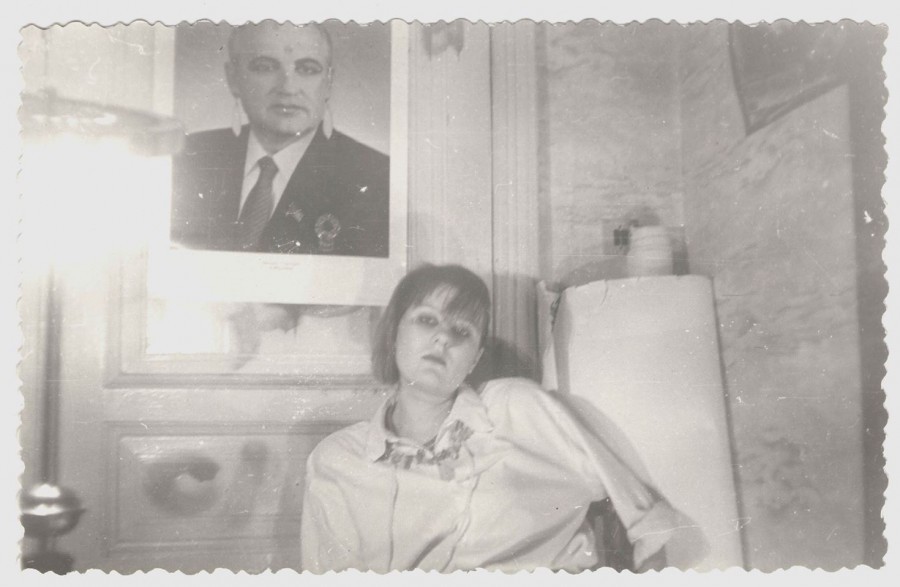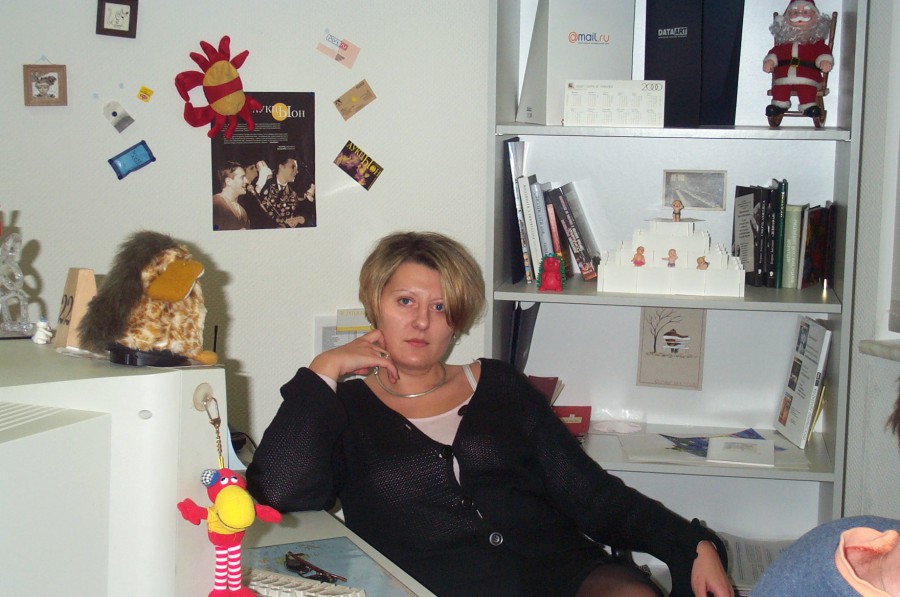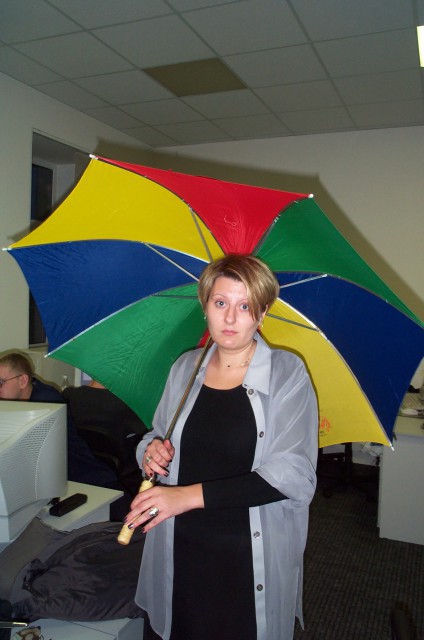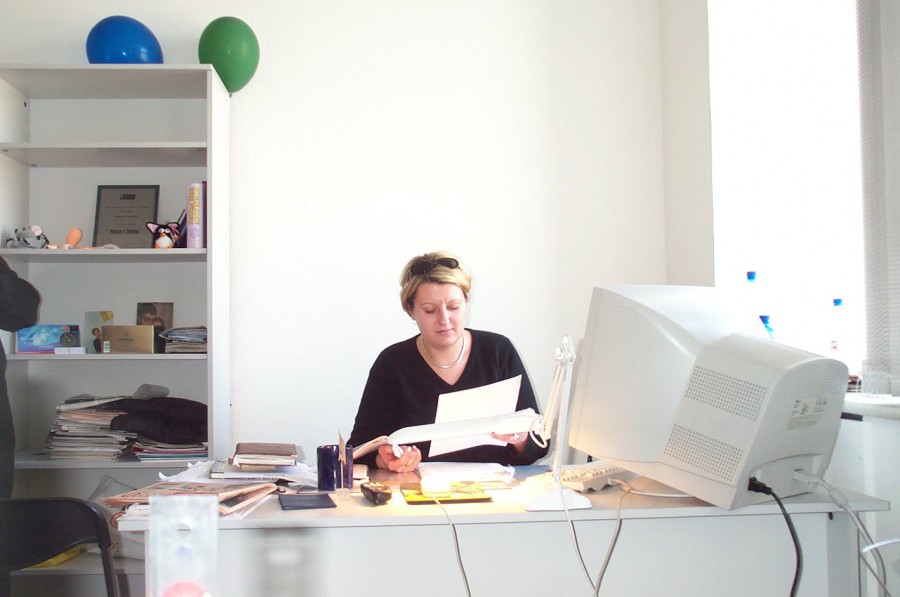Maria Chernitskaya: “It was a great time - no one stood above the soul”

Maria Chernitskaya graduated from St. Petersburg State University, studied the legacy of Vladimir Nabokov, studied disguise in the United States and was going to write a dissertation there - but rather suddenly became involved in advertising and marketing in the field of IT-technologies, worked in DataArt as Mail.ru new marketing director. Now Maria is the founder, director and main group of companies of iConText, the largest independent Internet agency in Russia.
- You finished filfak, was engaged in Nabokov?
')
- Yes, I studied in America and had to write a PhD. I returned to Petersburg in the spring and it was assumed that in the fall I would leave for Kansas, where the side study was very strong, but I did not enter the first spring. I was told: "Come in a year, hang out while in Russia." For me it was a depressive bummer. I thought, what am I going to do here, I do not want to live here for a second. I had no plans, no work. I taught English at 610 school and worked in the legendary film journal Seance at Luba Arcus.
- And how did the Internet appear in your life?
- In Nabokov's fund I was told, they say, Masha, we need to make saytik. We have a friendly provider company, you go to them, they will help you. I went, they gave me the best specialist, distracted him from all things, and we spent days talking about Nabokov. In the meantime, they were launching the “Computer Network” Internet provider, and I told them that, I think, this and that should be done - for them I was a man who lived in America and saw something. As a result, they offered me to become their marketing director. There was little money, the work was nervous, everything was difficult, but everything that worked out turned out very well.
At some point, I discovered for myself that in Moscow there is a Cityline provider (one of the first major Russian Internet service providers - editor's note) and a glossy magazine, Internet. I dreamed of joining the world of these people - and suddenly the owner of "Cityline" Emelya (Emelyan Zakharov - a prominent Moscow gallery owner - ed.), Called me and offered to become their director in St. Petersburg. This was a strange time - social elevators drove at great speed, some people found others similar in spirit, and trusted them big money and big tasks.

- How did you find out about Mail.ru and DataArt?
- I worked for almost two years at Cityline, but the director was not very good. She understood about marketing, but not about how to steer a large technology company.
At this time, someone from my friends said that Mail.ru needed people, and we need to talk with Alexei Krivenkov. It should be understood that in 1998 for those who worked in a provider company, going to the Internet project was a downshifting. There were no Internet projects, and those that did not bring money. But I still went to Mail.ru, agreed with Krivenkov. He said choose your place. The office was huge, and I chose a room where nobody was. Opposite me, then sat Alexei Murashko (DataArt technical director - ed.) Nicknamed Lemur, who also came from a large provider company, also from a big position. We had a good expensive suit, in which we came to work and sat down at large empty tables.

- Once leaving on vacation, Lemoore wrote to everyone detailed instructions on what to do in his absence. Called her "Testament." And did not return from vacation - crashed in a car ...
- About Murashko I remember this story. We all worked without time then: we came as we wake up, we left as we had to. Usually very, very, very late. And Lemur had two girls, and every evening, sitting across from me, he sang songs on the phone so that they would fall asleep.
At first, it was completely incomprehensible what we should do. It was not necessary to advertise Mail.ru: the number of users by itself in a few months from 100 thousand increased to 10 million.
Then I came up with two projects. First, she made a survey of people who registered with Mail.ru. The service has used its results for many years. Everyone who registered the mailbox is millions - I made them respond to a detailed questionnaire, inadvertently letting them know that without this they would not open the mailbox. I then looked through the results and understood, many people sincerely thought that if they didn’t fill this sheet, they would be left without mail - there were very few unanswered questions.
The second thing is redesign. Alexey in an interview said that Mail.ru was not built as a mass service. A vivid example of this approach: Mail.ru was then held by the hands of one person named Volodya, who had problems with alcohol. Everyone was afraid that he would drink it and drop the service. Therefore, there was such an idea - to go out with Volodya for lunch in order to avoid embarrassment.
Or another example. Two young ladies, Julia and Natasha, worked as a support for “Mail”. By that time we were all in the same room, and it was possible to say: “Natasha, and who owns the address masha@mail.ru?” And she’s like: “Why, some goat, but she doesn’t use it. Do you want? Take it. ” So I got the addresses masha@mail.ru and marusya@mail.ru, but I lost them both later.
So, redesign. We did it together with Martin (Andrey Yazikov, DataArt designer - editor's note). It is now that such teams are working on such interfaces, and together we have made a new Mail.ru for two or three months, with the logo, which, in my opinion, still exists. Then, however, it seemed that it took half his life.

- Then the separation of DataArt and Mail.ru happened. "Mail" went to Moscow, and you were offered to choose whether to stay in DataArt, or go to the capital.
- I wanted to go to Moscow, but we talked with Zhenya Goland and did not agree.
By the way, about Golanda. On the eve of that New Year, when Yeltsin resigned, Zhenya Goland flew to America and carried with him an industrial amount of black caviar. At customs in "Pulkovo" he was braked, and the caviar had to be left in St. Petersburg. It went to us, DataArt employees. We ate it all together and watched on TV, as Yeltsin said: "I am tired, I leave."
- Ha! About caviar, I remember! It was the caviar of Yura Belenky (one of the then top managers of DataArt - ed.). I bought it to him on the Nevsky in the famous fish. There were such blue cans, rewound with a wide elastic band. Nifiga not sealed - so they were not released.
- Yes, yes, for sure! In short, I did not go to Moscow, stayed in St. Petersburg and was engaged in projects within DataArt. It struck me that suddenly a lot of easy money was formed in the company. In an instant, everything began to change. All began to go to the big corporate parties, there were too many people. It seemed to me that these expenses are unfounded. A striking detail: a girl who fed them, an uncle who cleaned them, and a special butcher who brought them meat every day was assigned to the turtles who lived in the office.

- They still had a special vet!
- This is all struck my imagination. But at the same time it became clear that Mail.ru had to grow very quickly. All projects and verticals that Mail.ru needed were to be done. And I, if my memory serves me, did Rabota.Mail.ru.
- “Mail.ru Cards” we did with you, Masha!
- Yes, but “Postcards” is rather an entertaining story. "Jobs. Mail.ru" was more serious. It was a great time - no one stood above the soul, and you could do anything.
- So you still remember this time with nostalgia?
- Of course, with nostalgia! Then it began to seem like you live in retirement.
- Big money did not become too literally in a few months.
- Yes. But at that moment it became noticeable that the attitude towards content projects and services in the market began to change. I believed that the money would come back there again - and large, because this audience could be monetized.
- Is that what inspired you to go into content projects?
- Yes. At first I went to work at Headhunter as a marketing director. Then I became the marketing director of Russian Lycos, who, however, did not live long. After Lycos, I didn't know what to do for quite a while. In the end, in 2002, with Lev Glazer (founder of AdWatch and MediaSelling agencies, then director of media product development at Yandex, until recently, Yandex’s commercial director - ed.), We opened iConText, in which I became director. From this grew a very, very big business - five companies, a holding.
- How did it happen that you started to engage in contextual advertising? Then it just appeared?
- The idea, of course, was not mine - Glazer’s idea was, and he knows how to zombie people. For me, then, the word "contextual advertising" was an empty sound - such a business did not exist.
But I had a friend Timofey - a mathematical linguist. And I thought: I have a matlingvist and an idea of contextual advertising. Why not try? At first, everyone laughed at us, said how funny our budgets are. But I became so clear the idea of what we sell. I was very skeptical of display advertising - and now I am just the same. And contextual advertising from the very first minute was clear to me. It was easy to come to any company - Megafon, for example, this is one of our first clients - and explain why and what. People understood this very well. And we very quickly with Timothy learned to plan it all and beautifully wrapped.
- You appeared in 2002. There was no Google context. Only direct was?
- There was no Yandex.Direct - it appeared after a year and a half.
- What was it? "Runner"?
- There was a "Rambler" and there was a banner in the middle of the search results on Yandex. It was a contextual banner, but it was not “Direct” in the form to which we are accustomed. There was also an Aport. Then “Runner” appeared, and then Google appeared here, in Russia.

- Can you say that you are now in your place, that you are doing what you have dreamed of in life?
- Well, I will answer that. For a long time I had no doubts whether I was doing this or not, whether I like it or not. And now I am unreal happy that it turned out the way it did. Now the business is growing and the situation is changing, and it seems to me that something else needs to be done. Maybe we need to be part of a large system, not a group of independent companies. Anyway, I look back - and I have no regrets at all.
And I am very glad that I had this experience. I had neither a programmer’s education, nor an advertising or managerial one. I worked at Mail.ru as a marketing director and head of Internet projects at DataArt - and this gave me an unreal experience.
- Do you have any friends since DataArt?
- Of course. Martin, with whom we became friends, while doing the interface. Dima Trub (one of the DataArt developers - Ed.), With whom we were friends and kept the relationship after DataArt. Alexei Krivenkov, of course, we continue to be friends in Moscow. Since the time of Port.ru, I have a close friend left - Varya Barbarash (content project manager at Port.ru - ed.).
And I very much regret that two people dear to me died - Alex Murashko and Vlad Gabriel.
Source: https://habr.com/ru/post/366449/
All Articles